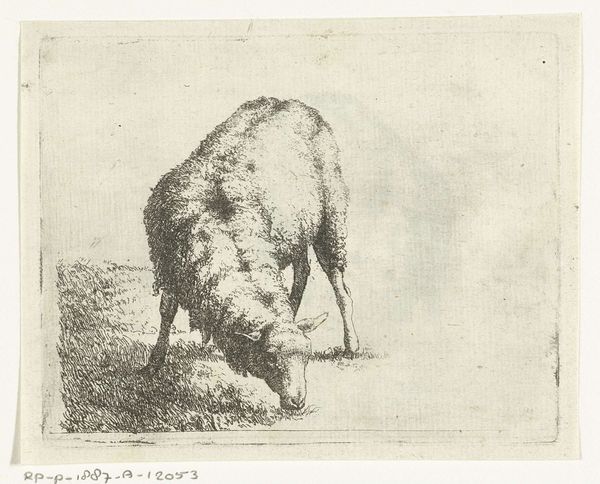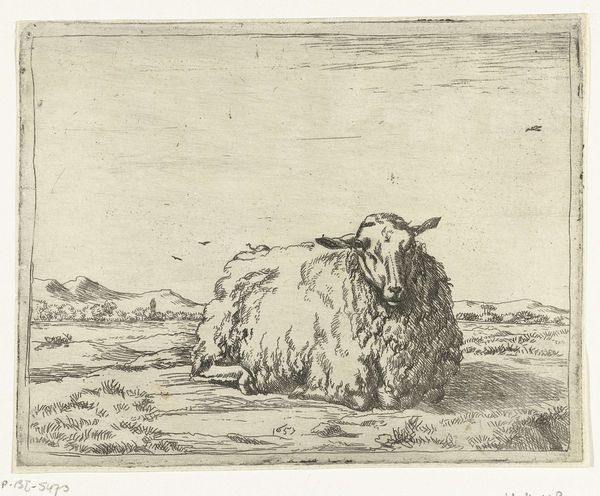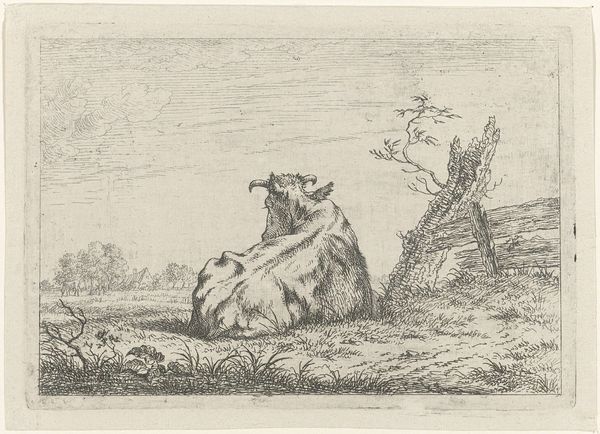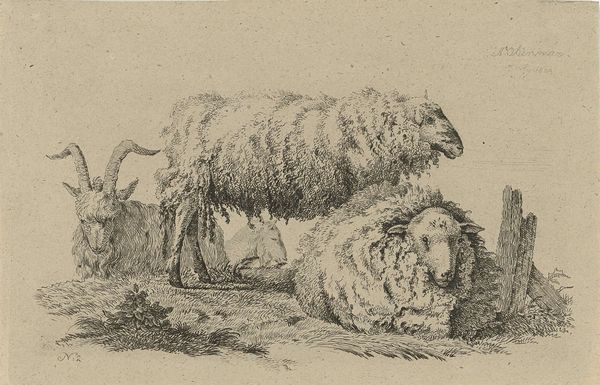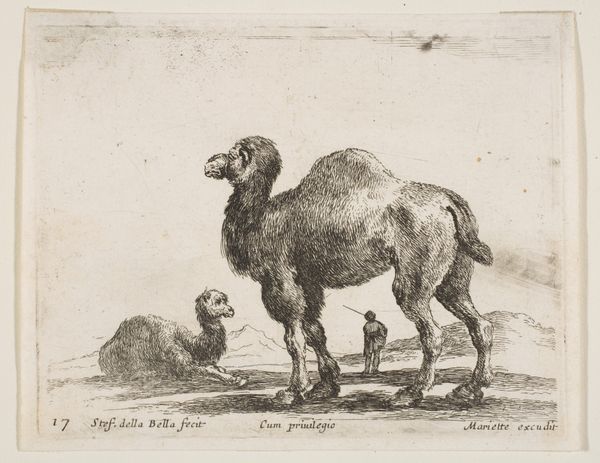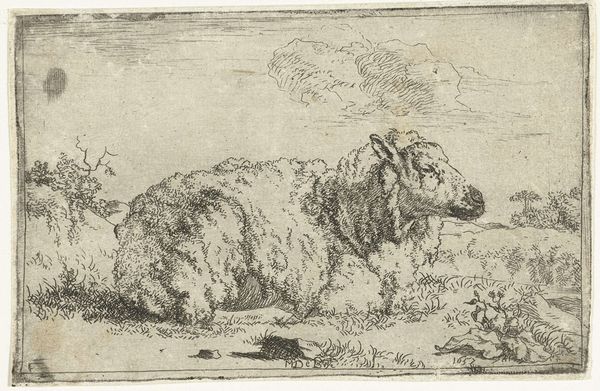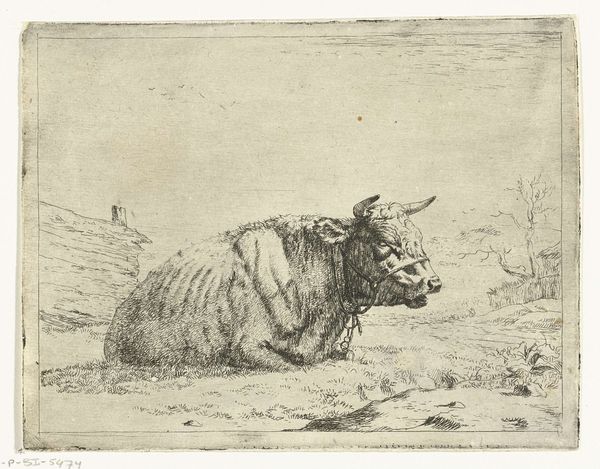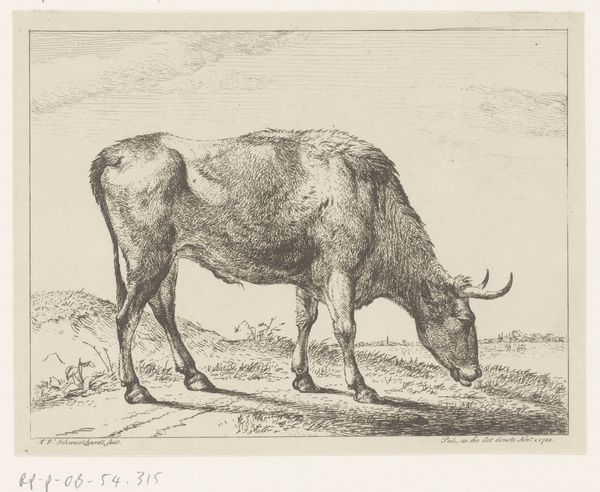
print, etching
# print
#
etching
#
old engraving style
#
landscape
#
realism
Dimensions: height 72 mm, width 96 mm
Copyright: Rijks Museum: Open Domain
Frédéric Théodore Faber created this etching of a sheep in the early 19th century, using a metal plate and acid to create a design on paper. The etching process involves covering a metal plate with a waxy, protective layer, then drawing through it with a needle to expose the metal. When acid is applied, it bites into the exposed lines, creating grooves that hold ink. The plate is then inked, wiped clean, and pressed onto paper, transferring the design. The resulting print displays fine lines and textures, capturing light and shadow with precision. Faber's printmaking process is interesting when considered alongside the social and economic context of the early 1800’s. Etchings such as this were relatively quick and cheap to produce and were therefore accessible to a broader range of people than painting, while still demonstrating the skill of the artist. In this way, Faber's image embodies the industrialization of art. Ultimately, understanding the materials and processes behind this seemingly simple image of a sheep allows us to consider its cultural significance, and to challenge the traditional hierarchy between fine art and craft.
Comments
No comments
Be the first to comment and join the conversation on the ultimate creative platform.
